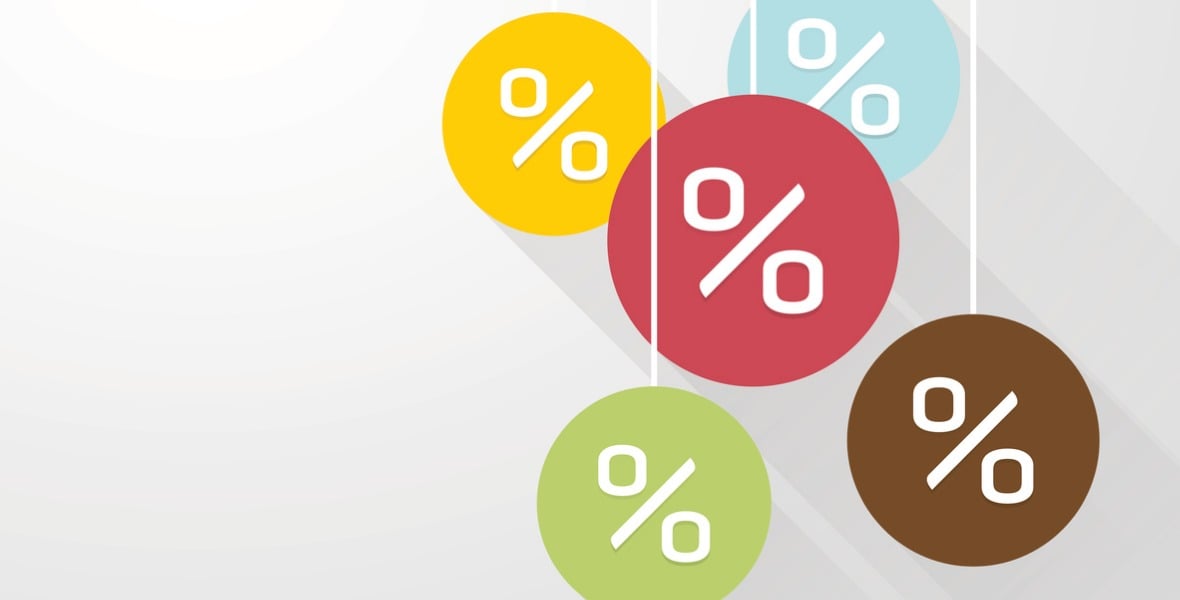Will current optimism about Canada's economy push our mortgage rates up?
The Bank of Canada (BoC) is widely expected to increase its overnight rate by another 0.25% when it meets this Wednesday, and if that happens, variable-rate and home-equity line-of-credit (HELOC) borrowers will see their rates rise by the same amount shortly thereafter.
While fixed-rate mortgages will not be directly impacted by the BoC’s looming policy-rate hike, its accompanying commentary and the release of its latest Monetary Policy Report (MPR) may also push Government of Canada (GoC) bond yields higher, which our fixed mortgage rates are priced on. Most market watchers expect the BoC to sound a more upbeat tone on our economy this week for the following reasons:
- Our trade uncertainty clouds have finally parted. NAFTA has been replaced with the USMCA, and our policy maker’s worst fears of an escalating tariff war with our largest export partner can now be put to rest (subject to each member country approving the new agreement).
- Our economy grew faster than expected in the second quarter. In its July MPR, the Bank projected annualized second quarter GDP growth at 1.9%, but our actual result came in much higher, at 2.9%.
- Canadian businesses are upbeat. The BoC’s latest quarterly Business Outlook Survey, which was completed just before the USMCA was signed, showed that Canadian businesses were optimistic about future sales and already inclined to invest in productivity enhancements and expansion. That is encouraging because the BoC is hoping that business investment and rising export sales will replace consumer spending as the main drivers of our economic momentum.
- CIBC Chief Economist Avery Shenfeld recently noted that the BoC is likely “to sound sufficiently hawkish to justify the pain that rate hikes impose on debtors”. Essentially, the Bank’s words need to back up its actions.
All that said, the bond market’s reaction may well boil down to the inclusion or exclusion of the key word “gradual”.
Until now the BoC has said that it will take a “gradual” approach to additional rate rises and that it will continue to be guided by the incoming data. If this word is omitted from the Bank’s next policy statement, it will portend an accelerated rate-hike timetable, and investors will bid up bond yields in response.
While many market watchers are speculating that the BoC will drop this key phrase, here are some factors that may continue to give the Bank pause before doing so:
- Overall inflation, as measured by our Consumer Price Index (CPI), fell sharply in September. Although our annualized CPI spiked to 3% in July, it then dropped to 2.8% in August and 2% in September. This is a more rapid decline than the BoC had forecast, and controlling inflation is, after all, its primary mandate.
- Businesses are citing concerns about labour shortages. While that should portend rising labour costs, so far these haven’t materialized and the BoC hasn’t been able to pinpoint why. (In fairness, this anomaly currently exists in many other developed countries as well.) Our average annualized rate of wage growth for permanent workers has declined for three straight months and fell to 2.2% in September, which means that our current rate of income growth is barely keeping pace with inflation.
- Businesses are also citing concerns about rising capacity pressures, but that doesn’t guarantee that they will be able to raise prices in response. The BoC has repeatedly cited concerns over “competitiveness challenges”, which refers to our export competitiveness and is code for the Loonie’s lofty level against the Greenback. If investors believe that the BoC is going to accelerate its rate hike timetable, the Loonie will rise even further and intensify this economic headwind.
- Remaining trade uncertainty still has the potential to negatively impact our economy. The U.S./China trade war is intensifying at the same time that China’s GDP growth has dropped to its lowest level in a decade (6.5% in the third quarter). While we don’t export a lot to China directly, that country is still the world’s marginal buyer of most commodities, and that means that changes in Chinese demand largely determine whether commodity prices rise or fall. Commodities represent a significant portion of our overall economic output, and as such, slowing growth in China that is exacerbated by escalating U.S./China trade tensions could have a material impact on our economic momentum.
The BoC has repeatedly said that our elevated household debt levels will magnify the impact of every additional rate increase and that it can take up to two years for the impact of each hike to be fully felt. The faster the Bank raises its policy rate, the less time it has to observe the incoming data and to gauge the incremental impact of each increase. If inflationary pressures aren’t compelling the BoC to adopt this riskier approach, what’s the rush?
The Bottom Line: Variable mortgage rates are likely to increase by another 0.25% this week. The real question is whether the BoC will also adjust its rate-hike timetable going forward. The Bank must reconcile our faster-than-expected GDP growth rate against our slower-than-expected inflation rate and determine whether its gradual approach to additional rate hikes is still warranted. If the BoC omits the word “gradual” from its report, expect GoC bond yields and the fixed mortgage rates that are priced on them to rise. Conversely, if the BoC repeats that word in its key policy statement, bond yields and fixed mortgage rates are likely to move the other way because at this point, the bond-market consensus is expecting more hawkish BoC language.
Stay tuned.
Top Image Credit: MimaCZ
David Larock is an independent full-time mortgage broker and industry insider who works with Canadian borrowers from coast to coast. David's posts appear on Mondays on this blog, Move Smartly, and on his blog, Integrated Mortgage Planners/blog.
October 22, 2018
Mortgage |



.jpg?width=687&name=Rate%20Table%20(October%2022,%202018).jpg)
